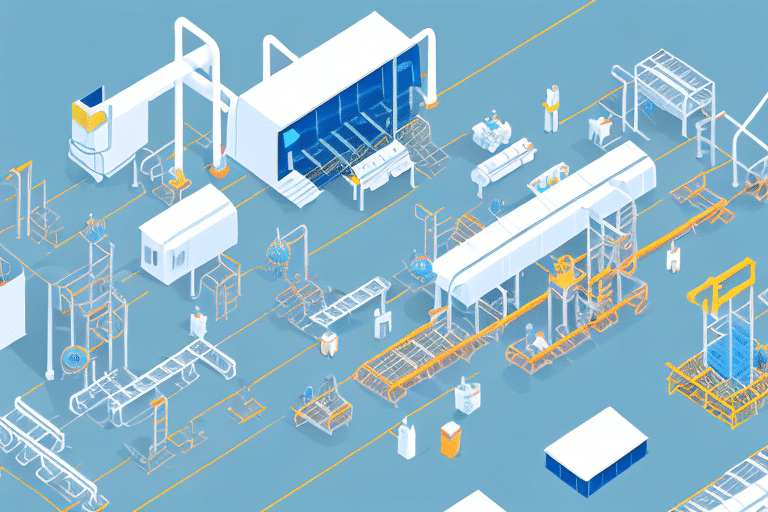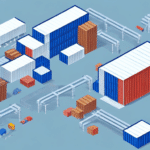Streamlining Production Processes
Streamlining production processes is a crucial strategy for reducing costs and lead times in manufacturing. By optimizing operations from raw material procurement to the delivery of finished products, manufacturers can identify and eliminate bottlenecks through automation or process modifications.
Importance of Streamlining
Efficient production processes not only lower costs but also improve the quality of the final product. Reducing inefficiencies ensures that each production step is executed with precision, leading to fewer defects and higher customer satisfaction. Additionally, streamlined processes enhance workplace safety by minimizing the risk of accidents and injuries.
Implementing Lean Manufacturing Principles
Lean manufacturing focuses on minimizing waste without sacrificing productivity. By adopting lean principles, manufacturers can optimize material flow, reduce lead times, and improve overall process efficiency. Key components include:
- Value Stream Mapping: Analyzing and mapping out the entire production process to identify and eliminate waste.
- 5S Methodology: Organizing the workplace to enhance efficiency and safety.
- Just-in-Time (JIT) Production: Producing only what is needed when it is needed, reducing inventory costs.
According to the Lean Enterprise Institute, companies implementing lean practices have seen reductions in production costs by up to 25%.
Identifying and Implementing Cost-Cutting Opportunities
Identifying Opportunities
Identifying cost-cutting opportunities involves a comprehensive review of all production-related expenses, including input costs, labor, transportation, and overheads. Techniques such as benchmark analysis against industry standards can reveal areas for potential savings.
Value Stream Mapping
Value stream mapping helps in visualizing the flow of materials and information through the production process. By identifying bottlenecks, redundancies, and inefficiencies, manufacturers can target specific areas for cost reduction. Studies by the Lean Manufacturing Institute show that value stream mapping can streamline operations by up to 30%.
Measuring Performance Metrics
Performance metrics such as cycle times, downtime, first-pass yields, and quality levels are essential for monitoring production efficiency. Continuous monitoring and benchmarking against industry leaders enable manufacturers to set realistic improvement goals and track progress effectively.
Leveraging Technology to Reduce Costs and Lead Times
Adopting advanced technologies is vital for enhancing productivity, improving product quality, and reducing production costs. Key technological advancements include:
- Robotics and Automation: Automating repetitive and hazardous tasks reduces labor costs and increases precision.
- Internet of Things (IoT): IoT devices provide real-time data analytics, facilitating proactive maintenance and efficient resource management.
- Computer-Aided Design (CAD) and Product Lifecycle Management (PLM): These systems enhance design accuracy and streamline the product development process.
According to McKinsey & Company, manufacturers that integrate advanced technologies can achieve up to a 20% increase in productivity.
Enhancing Workforce Efficiency
Training Employees
Comprehensive training programs equip employees with the necessary skills to perform tasks efficiently, improve quality control, and reduce waste. Continuous learning fosters a motivated workforce committed to enhancing production efficiency.
Investing in employee training can lead to a 10-15% increase in productivity, as reported by the Society for Human Resource Management.
Developing a Culture of Cost Awareness
Creating a culture of cost awareness involves instilling a sense of responsibility and accountability in employees to optimize costs and eliminate waste. Regular communication, engagement, and recognition programs foster a shared sense of purpose and continuous improvement.
Managing Financial Aspects During Cost Reduction
Managing Cash Flow
Effective cash flow management ensures financial stability during cost-cutting initiatives. Strategies include optimizing inventory levels, negotiating favorable payment terms with suppliers, and utilizing invoice factoring to maintain liquidity.
Maintaining a healthy cash flow is critical; according to the eFinancialCareers, businesses that manage cash flow effectively are 50% more likely to survive economic downturns.
Ensuring Quality While Cutting Costs
Balancing cost reduction with quality control is essential for maintaining customer satisfaction and regulatory compliance. Implementing robust quality control programs focuses on improving processes and reducing waste, ensuring product consistency and safety.
By maintaining quality standards, manufacturers can prevent costly recalls and enhance brand reputation. The ISO 9001 standard provides a framework for quality management systems that can help achieve these goals.
Case Studies and Real-World Examples
Many successful companies have achieved significant cost reductions and lead time decreases through the implementation of best practices. For instance, Toyota’s adoption of lean manufacturing principles has been widely recognized as a benchmark in the industry.
Another example is Boeing, which has utilized advanced technologies and supply chain optimization to streamline its production processes, resulting in substantial cost savings and improved delivery times.
These case studies demonstrate the tangible benefits of strategic cost reduction and efficiency enhancement, providing valuable insights for other manufacturers aiming to improve their operations.
Conclusion
Reducing production costs and lead times is essential for maintaining competitiveness in the global market. This comprehensive approach involves streamlining production processes, optimizing the supply chain, adopting advanced technologies, and effectively managing cash flow. Fostering a culture of continuous improvement and investing in employee development are key to sustaining these efforts. By implementing these strategies, manufacturers can achieve significant cost savings, enhance product quality, and improve their market position.




















